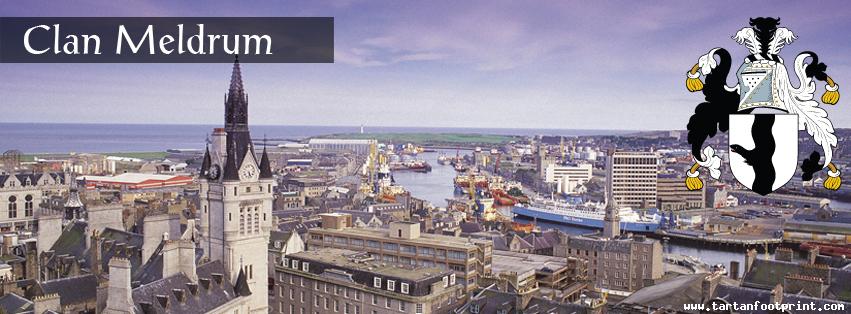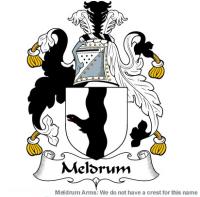
Clan Meldrum
The name Meldrum is of territorial origin, coming from the ancient barony of Meldrum (Melgedrum) in Aberdeenshire.
William de Melgedrum and his father Philip were witnesses to the charter of the founding of the hospital of Turriff by Alexander Cumyn, Earl of Buchan.
A quitclaim of Beeth Waldef in Fife was witnessed by Alexander de Melgedrom or Melgedrum in 1278.
Both David de Melkedrum of Fife and William de Melkedrom, who was sheriff of Aberdeen in 1292, gave their allegiance to England's Edward I by signing the Ragman Roll in 1296.
In 1317, in Aberdeen, William de Melgedrum was one of the "burgenses rure manentes".
A grant of the barony of Dalkeith to William de Douglas was witnessed by Philip de Meldrome in 1341, and in 1358, a William de Meldrwm was witness to charters of confirmation by Robert the Steward.
A Scots prisoner of war, known as William Myldrum, was beheaded in 1402.
At the 1452 battle of Brechin, William de Seton (son of Sir Alexander de Seton) was killed. He was married to Elizabeth de Meldrum.
In 1477, Thomas de Meldrum was admitted burgess of Aberdeen.
Over the years, the surname has also appeared as Meldrome, Meldroom, Meldroum, Meldrowm, and Melerum.





